December grouse season offers chance to expand hunting horizons
By KATIE KEEN
Michigan Department of Natural Resources
With Michigan’s most popular hunting season – firearm deer – now put to bed, some hunters might not be ready to call it a day just yet.
The December ruffed grouse season, Dec. 1 to Jan. 1, offers an entirely different hunting experience for deer hunters who just can’t stay still, are always second-guessing the blind they chose or just want to get a few more miles out of their base license.
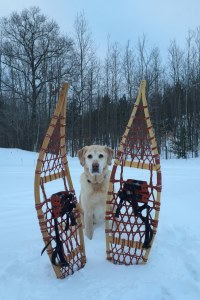 The base license – which all Michigan hunters already have, as it’s required to purchase other hunting licenses – is the only license needed to hunt ruffed grouse. The base license – which all Michigan hunters already have, as it’s required to purchase other hunting licenses – is the only license needed to hunt ruffed grouse.
“I go because I’m crazy, I guess,” said Michigan Ruffed Grouse Society member Aaron VanderWall. “I would religiously go out on New Year’s Day, despite conditions, in hope of killing what would be both the last grouse of the season and the first grouse of the next year.”
Deer hunters who have never tried bird hunting might consider calling that friend or family member who’s always talking about his hunting dog, suggested Al Stewart, Michigan Department of Natural Resources upland game bird specialist.
“During the December hunt, it’s helpful to use a dog,” said Stewart. “Not everyone has a dog, but several hunters can work together with one.”
Stewart added that the December season is a great time for grouse hunters to introduce their deer-hunting friends and family to the sport.
“Now is your time – invite your favorite deer hunter, set a date and go,” he said. “Imagine if each bird hunter took just one person new to the sport out.
“Just like other hunting pursuits, bird hunting isn’t seeing an upward trend in new hunters. Fresh blood is needed, and a great way to get someone hooked can be taking them from the field to the table. Cook and enjoy your harvest or grab some game from a previous hunt from your freezer if you didn't get a bird. Share the bounty.”
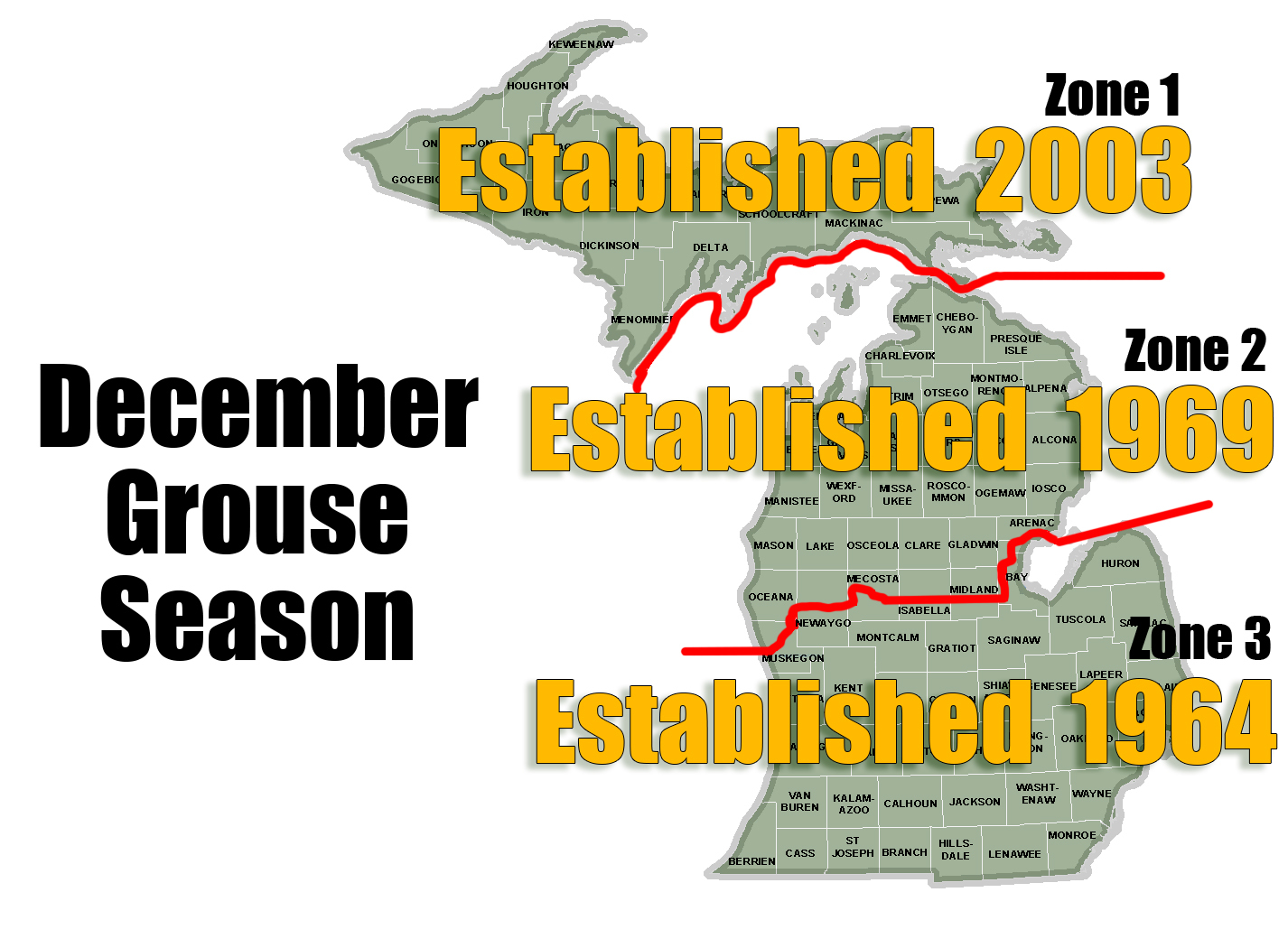 The late grouse season is a prime time for hunters to get out and walk without the worry of busting their deer season by traipsing through areas where the deer were hanging out during late November. The late grouse season is a prime time for hunters to get out and walk without the worry of busting their deer season by traipsing through areas where the deer were hanging out during late November.
“The late season hunt is about getting outside with your dogs,” said avid grouse hunter Fritz Heller from northwest Michigan. “Birds can be a bit unpredictable this time of year, so double it up with some scouting for the next deer season.”
Providing an additional opportunity for hunters without impacting the grouse population was the reason behind the season.
“We haven’t always had a December season,” said Stewart. “Michigan opened by zones, with southern Michigan opening first in 1964, then northern Michigan in 1969, and then the Upper Peninsula most recently in 2003.”
For many, the December grouse season is a tradition.
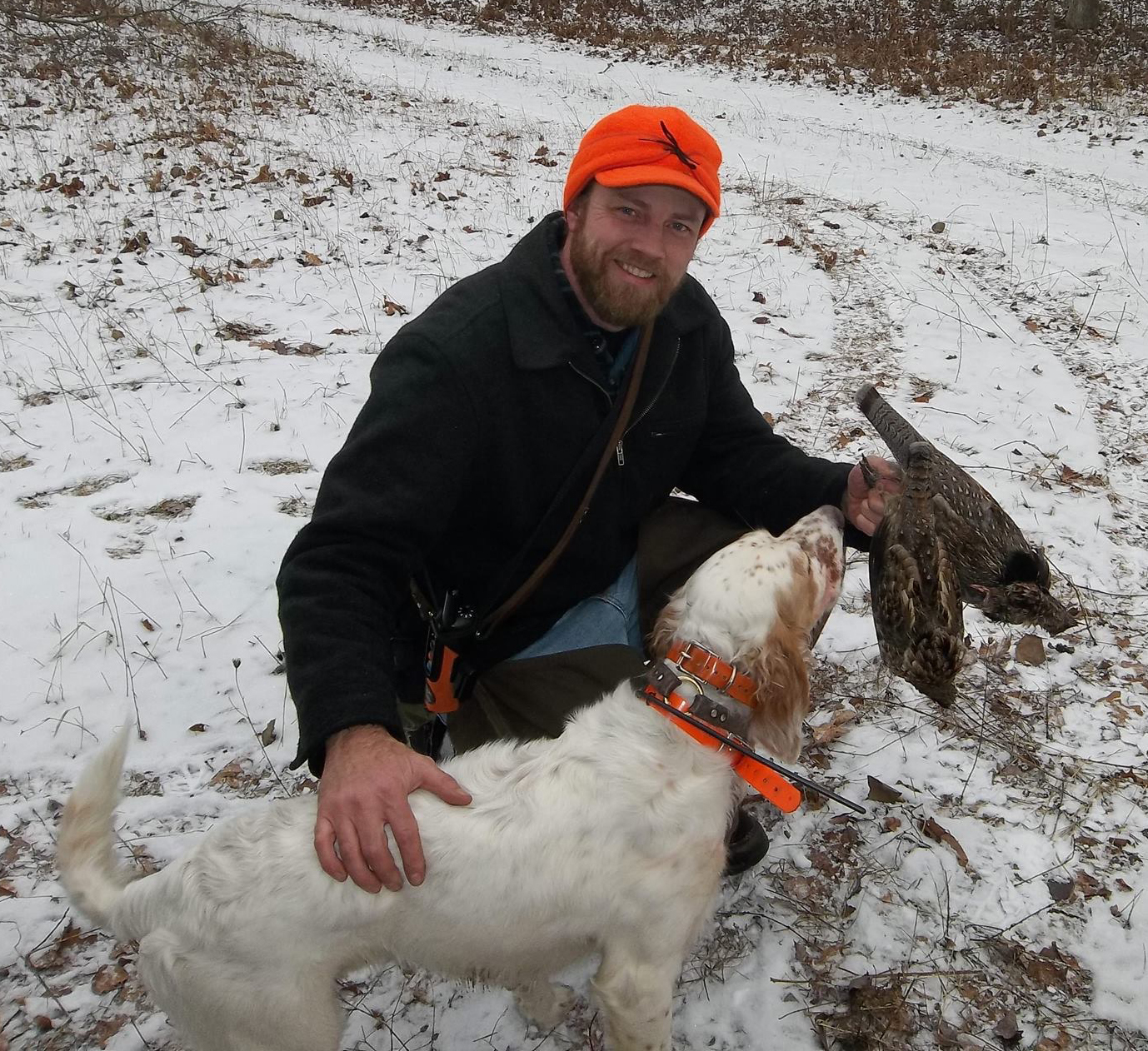 “I have a December birthday and go grouse hunting for my birthday,” said Michigan Ruffed Grouse Society member Brian Sneller. “A December hunt is also a time for me to contemplate the year that’s been and the one to be.” “I have a December birthday and go grouse hunting for my birthday,” said Michigan Ruffed Grouse Society member Brian Sneller. “A December hunt is also a time for me to contemplate the year that’s been and the one to be.”
During this time of year, grouse tend to be grouped up. It may take some time to find one, but once you do, it probably will not be alone. During the earlier fall season, grouse are flushed more often, but they are normally by themselves.
“You may walk twice as long for the same number of birds in December,” said Heller. “Some years can be action-packed,” with hunters running into groups of birds.
Heller said his best advice for the late-season hunter is to think about warm places in the forest. “It’s all about the swamps.”
Finding thermal cover – like spruce trees with boughs blocking the wind and even south-facing slopes, and especially a ridge where some beech nuts or acorns have fallen – can be helpful.
Hunters, who already have a vast knowledge of where to find other types of game, can use that knowledge to help find grouse in December.
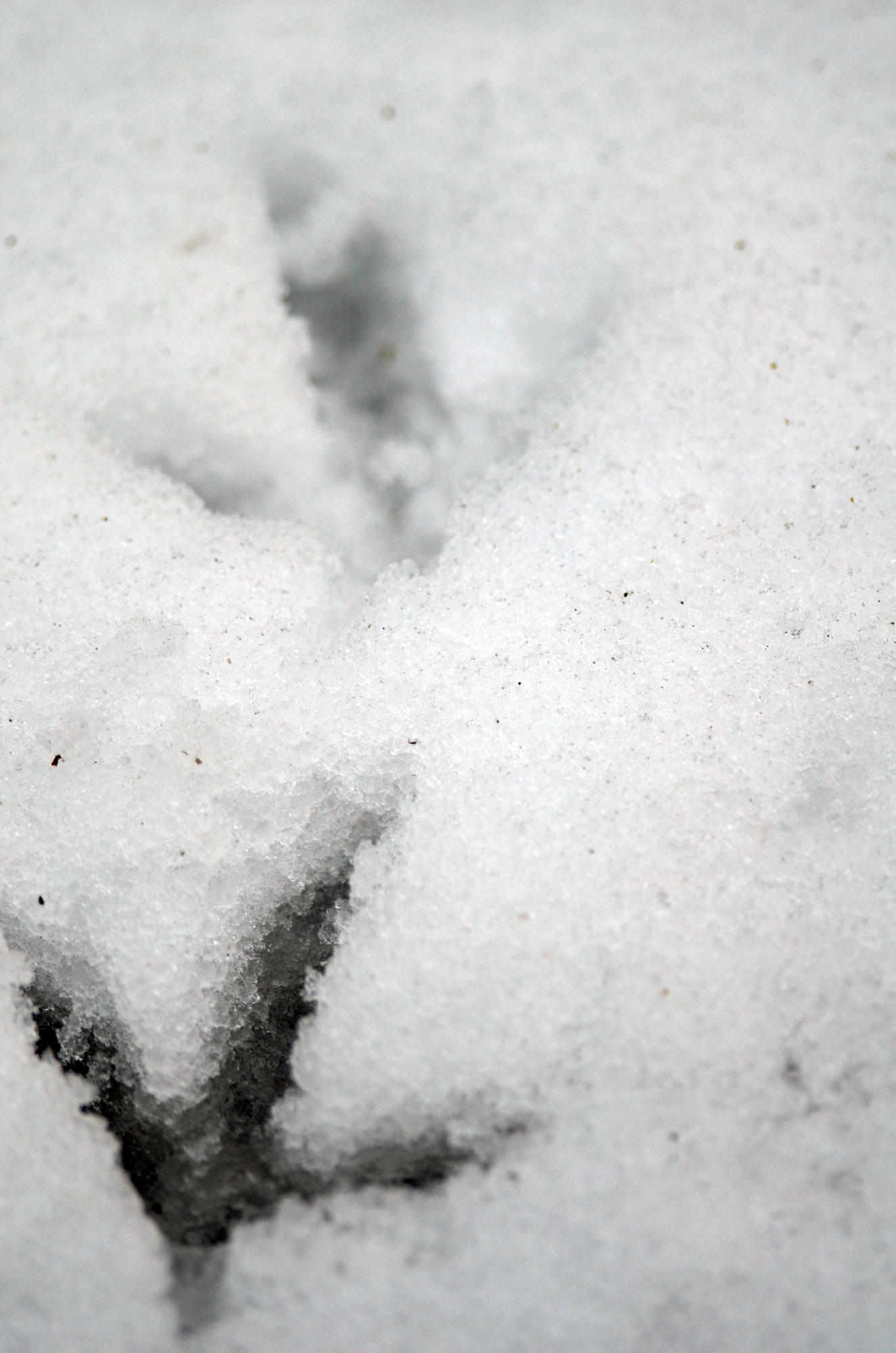 One advantage of the late season is the potential to have some snow on the ground. A little snow cover – a dusting to just a couple inches is said to be perfect – can be especially useful to help show animals’ travel. One advantage of the late season is the potential to have some snow on the ground. A little snow cover – a dusting to just a couple inches is said to be perfect – can be especially useful to help show animals’ travel.
Grouse tracks in the snow, which look like turkey tracks but are much smaller, are hard to miss. They can be found in thick wooded areas with trees smaller around than your wrist.
Find an area that still has some fruit holding onto shrubs or small berries on bushes, catkins on tag alder or even crabapples. These little jackpots offer a great chance at finding the small grouse tracks.
In December, forests look different than they do earlier in the season, so identifying tree types may be a little more challenging.
Using a program like Mi-HUNT – an interactive mapping application with millions of acres of public land available to hunt labeled by stand type and age, with road names – can help hunters scout locations from the comfort of their couch.
Hunters harvest about 260,000 grouse in Michigan annually, during all seasons.
“This puts Michigan on the podium, but not at the top. Minnesota and Wisconsin, respectively, have us beat,” said Stewart.
Although Michigan’s grouse and their habitat are found primarily in the northern Lower Peninsula and the Upper Peninsula, they are still within a day’s drive of states to the south. This makes Michigan a destination for around 17,000 nonresident hunters.
The DNR gets valuable information about the hunting season and population of ruffed grouse and American woodcock from hunter cooperator surveys, which have been conducted since the 1950s.
Hundreds of hunters each year tally up and send in the details of their season. Hunters can help in monitoring grouse and woodcock populations by becoming cooperators and reporting on their season.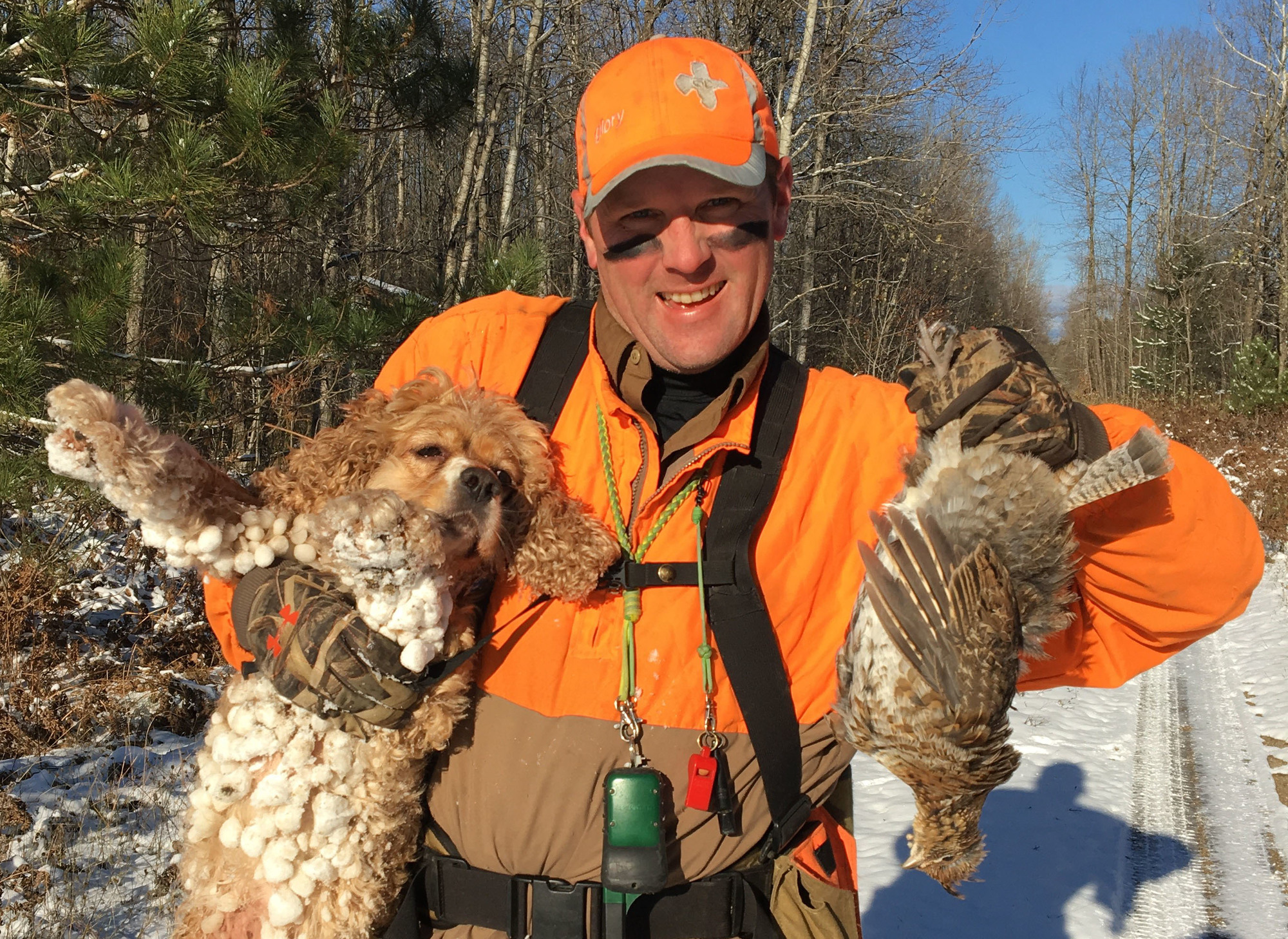
For grouse hunters looking to grow their sport, and their circle of hunting buddies, the December season is the perfect time to add a “plus one” to their hunting party.
“Hunters love to show others what they are passionate about, to get others to smile about what they love to do,” said Stewart. “Grab your friend, coworker or family member who just wrapped up their deer season and who maybe hunted small game as a kid.”
The late grouse season also offers deer hunters a great opportunity to extend their time in the field, take on a new outdoor challenge and add another variety of game meat to their table fare.
“Nothing eats better than a ruffed grouse,” said Heller.
Get more information on Michigan hunting at www.michigan.gov/hunting.
/Note to editors: Contact: Katie Keen, 989-385-0336. Accompanying photos are available below for download and media use. Suggested captions follow. Credit: Michigan Department of Natural Resources, unless otherwise noted.
Dog: A dog can be helpful in the late season, when birds are grouped up. You may have to look harder, but when you find one you should find several. (Ric Heller photo)
Hunter: Fritz Heller, an avid northwest Michigan grouse hunter, finds success in the late season although to do so he said you should love “just walking” and be willing to put in the distance. (Fritz Heller photo)
License: A valid 2017 base license is all that is needed to hunt grouse.
Snowy 1-2: Michigan Ruffed Grouse Society member Brian Sneller hunts every December to celebrate his birthday, reflect on the season and plan for the next year. (Brian Sneller photos)
Tracks: Ruffed grouse tracks in the wet snow at Craig Lake State Park in Baraga County.
Zones: Michigan’s December ruffed grouse season was established by zone. The southern Michigan zone opened first (1964), then the northern Lower Peninsula (1969) and the Upper Peninsula (2003) most recently./
The Michigan Department of Natural Resources is committed to the conservation, protection, management, use and enjoyment of the state’s natural and cultural resources for current and future generations. For more information, go to www.michigan.gov/dnr.
|